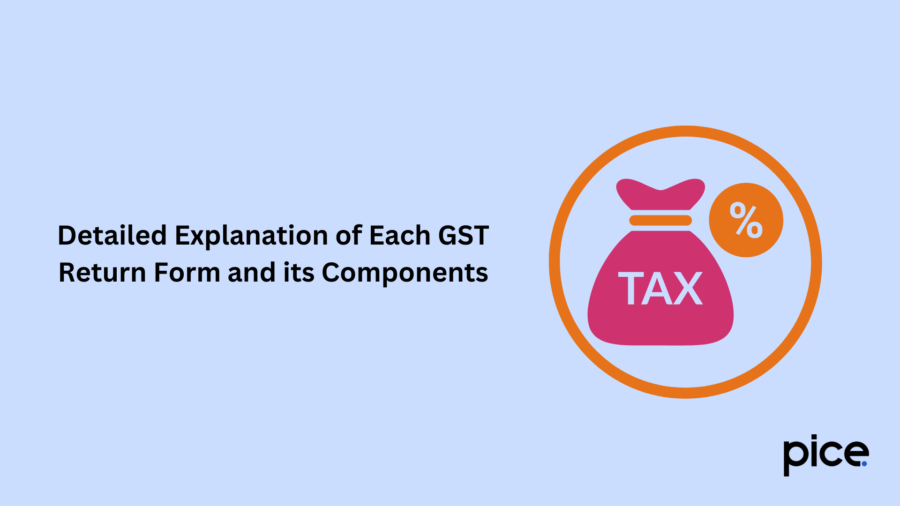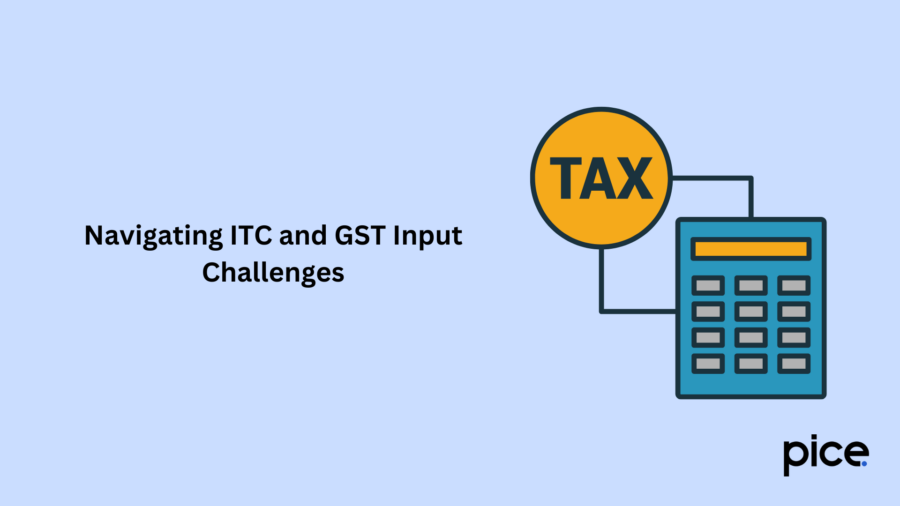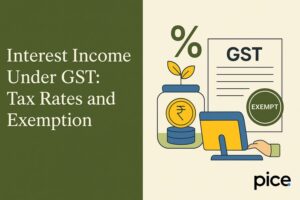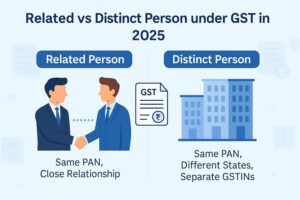Know about E-commerce Seller GST Return
- 10 Jan 25
- 9 mins

Know about E-commerce Seller GST Return
Key Takeaways
- Timely GST filing ensures compliance, boosts reputation, and maintains business continuity.
- E-commerce sellers face challenges like multi-state registrations and reverse charge mechanisms.
- Accurate record-keeping simplifies GST compliance and reduces audit risks.
- Proper ITC tracking and reconciliation optimize tax benefits and prevent reversals.
- Automation and expert guidance make GST filing efficient and error-free.
Many countries implement the Goods and Services Tax (GST), a consumption-based levy applied to the supply of goods and services. It seeks to simplify taxation since it is aimed at replacing several other indirect taxes.
GST returns for e-commerce sellers are significant because they deal with GST compliance, pricing policies, and international operations, which makes the tax system fair.
Importance of Compliant GST Return Filing for E-commerce Sellers
E-commerce sellers have several compelling reasons to file accurate GST returns. Firstly, they are able to meet the legal requirement of GST regulations, thereby avoiding fines and the law. Second, filing GST in time helps in strengthening the reputation of the supplier both with the customers and the tax authorities.
Thirdly, compliance is good for business since non-compliance threatens the flow of business by affecting the supply chain. Finally, the submission of the correct GST returns enables sellers to claim input tax credits without interruption and minimises tax burdens on online sellers.
Challenges Faced by E-commerce Sellers in GST Return Filing

Filing GST returns can be a complex task for e-commerce businesses due to several challenges:
- Managing Multiple State Registrations and GSTINs: Most e-commerce sellers have to get multiple GST registrations and GSTINs for their businesses to operate across multiple states. While they have high levels of state-specific requirements, these add significantly to their business administrative burdens.
- Navigating GST Rules for Different E-commerce Models: E-commerce works through such models as marketplaces, inventory, and dropshipping. Every model includes different GST consequences, such as tax collection and remittance, thus frustrating the attempts of sellers to comply with certain rules.
- Handling Issues Related to the Reverse Charge Mechanism (RCM): In RCM, where a credit note is raised, the responsibility to make payments is transferred to the buyer instead of the supplier. Like any other business that deals with the tax administration, e-commerce sellers encounter some RCM hindrances when engaging unregistered suppliers or when selling specified goods and services to customers.
- Claiming Input Tax Credit (ITC) for Procured Goods and Services: Being a form of business, different e-commerce sellers require to buy a set of products and services to continue selling. To make a correct amount of ITC, invoices should be tracked, data from different vendors should be reconciled and suppliers should be checked for GST compliance.
GST Return Forms for E-commerce Sellers
Indian e-commerce sellers are required to file periodic GST returns, primarily using three forms: GSTR-1, GSTR-3B, and GSTR-9/9C. GSTR-1 is used to report outward supplies, GSTR-3B captures monthly summary returns, and GSTR-9/9C is for annual reconciliation and audit. Additionally, GSTR-5 applies to non-resident overseas e-commerce businesses.
Criteria for Choosing the Appropriate GST Return Form
The type of GST return form to be filed depends on the nature of the GST registration, its turnover, and audit or reconciliation. The normal taxpayers pay returns through GSTR-1 and GSTR-3B on a monthly basis while GSTR-1 and GSTR-3B on a quarterly basis are paid by the composition dealers. Any registered dealer with an annual turnover exceeding the certain specified threshold is mandated to file GSTR-9/9C on an annual basis.
Detailed Explanation of Each GST Return Form and its Components

E-commerce sellers file GST returns using the same forms as offline sellers, including GSTR-1, GSTR-3B, GSTR-9/9C, and GSTR-5. Each form serves a specific purpose and has different filing deadlines. Here is a breakdown:
- GSTR-1
E-commerce sellers use Form GSTR-1 to report outward supplies or sales. This return is filed monthly unless the taxable person is registered under the quarterly or monthly reporting period for the QRMP scheme. GSTR-1 return must be filed even if they had no business in the corresponding tax period. In such cases, nil return can be given. But as for non-resident sellers or OIDAR service suppliers, this form is not required from them.
2. GSTR-3B
GSTR-3B is a summary return that outlines tax liabilities for a specific tax period. While sellers under the QRMP scheme file it quarterly, any other registered person must file it monthly. Like GSTR-1, this return is compulsory even in the absence of business activity, with the option to file a nil return.
- GSTR-9 / GSTR-4
These forms are annual returns for e-commerce entities. Regular taxpayers file GSTR-9, while those registered under the Composition Scheme file GSTR-4. Filing annual returns is mandatory for all online sellers, except NRIs, casual taxpayers, and OIDAR service providers. These returns include details such as tax payable and paid, exempt supplies, refund claims, ITC claims, and details of supplies made.
- GSTR-9C
GSTR-9C is a reconciliation statement required for sellers with an annual turnover exceeding ₹5 crores. It aligns the data from the GSTR-9 return with the seller’s annual financial statements. This form is filed annually, along with GSTR-9.
- GSTR-5
Non-resident e-commerce companies or sellers file GSTR-5 monthly to report business transactions within India, including inward and outward supplies. It replaces the GSTR-1 filing for such sellers and is also due monthly.
- GSTR-5A
OIDAR (Online Information and Database Access or Retrieval) services rendered by e-commerce sellers have to file this monthly return. This form replaces GSTR-1 in the case of OIDAR service providers, whether resident or non-resident.
Importance of Maintaining Accurate Records for GST Returns
Accurate record-keeping facilitates GST compliance because the preparation of GST returns involves a simple compilation of data. Records enable e-commerce sellers in identifying transaction reports, claiming ITC, and having records that should reconcile with the GST returns.
Additionally, organised records demonstrate compliance during audits or investigations, reducing the risk of penalties. They also support better financial decision-making and enable effective monitoring of business performance.
Invoice Requirements and Best Practices for E-commerce Sellers
According to GST regulations, e-commerce vendors are bound by certain conditions related to invoices. A typical invoice comprises the supplier’s and customer’s name, address, GSTIN, invoice number, date, description and quantity of goods or services supplied, rate of tax, and the total tax amount. Due to this, the invoices have to be numbered in a sequence.
Integrating GSTIN and Invoice Details for Seamless Return Filing
In order to reduce the level of complexity in the return filing, the two most important parameters would be GSTIN and the invoice data. This they can do by adopting various e-commerce invoicing technologies that facilitate invoicing with correct GSTIN details.
This integration then directly feeds the appropriate fields of the GST return forms, therefore minimising human errors and time consumption. Moreover, the integrated data makes it easier to reconcile, file taxes, and be GST compliant for e-commerce sellers.
Navigating ITC and GST Input Challenges

Here are some common challenges e-commerce sellers encounter with ITC and GST input:
Eligibility for Input Tax Credit
Several conditions have to be met for claiming ITC while selling through the e-commerce platform. They need to receive goods or services, have valid tax invoices or debit notes, possess a valid GSTIN and use the products for business purposes. Expenses related to non-business activities, exempt supplies or personal use are not eligible for ITC claims.
Addressing Common ITC Reversal Issues
ITC reversals can occur when suppliers are not paid within 180 days or when there are discrepancies in the supplier's returns. To avoid this, it is important for e-commerce suppliers to make timely payments to suppliers and regularly reconcile ITC data. Ensuring clear communication with suppliers can also help address errors and prevent reversals.
Optimizing ITC Claims and Reducing Discrepancies
When it comes to ITC tracking and reconciliation, mistakes may occur occasionally, and automating such processes is the best way to go. Periodic compliance regulation inspections and consulting professional tax advisors will help detect such problems on time and provide sellers with maximum ITC benefits consistent with the provided GST rules.
Conclusion
Filing GST returns for e-commerce sellers can be a complex task unless you have guidance from a skilled tax professional who understands the intricacies of the process. It is important to have a clear understanding of the required forms and their respective filing deadlines.
To avoid frequent mistakes and defaults, e-commerce operators and suppliers must seek professional assistance to reduce the compliance burden and ease the GST filing process.
💡If you want to streamline your payment and make GST payments, consider using the PICE App. Explore the PICE App today and take your business to new heights.
FAQs
 By
By 















